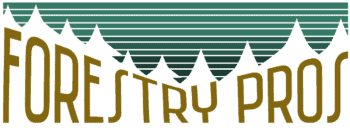- Lumber Guide: Sycamore Wood Uses - December 8, 2023
- Stihl MS291 Review and Buying Guide - December 7, 2023
- Mulberry Wood Uses: It’s Not Just for Silk Worms! - October 25, 2022
Often confused with other white oak species, the chestnut oak is regarded as a lower level lumber option. However, by understanding this unique species and its multiple usages, you can make it into an excellent wood for multiple uses like flooring, furniture, cabinets, and firewood.
In our guide to Chestnut Oak wood uses, we’ll be providing you insights about- a detailed description of the Chestnut oak wood and where you can find these trees.
Moreover, you will find everything you need to consider while working with its wood including some of the frequently asked questions about this valuable species at the end. Let’s first start with getting ourselves familiar with the Chestnut oak tree.
Chestnut Oak Trees
The Chestnut oak which is also known as rock Chestnut oak, Quercus montana is a North American species of Oak under a white oak group with leaves like Chestnut. Chestnut oak is one of the important trees that replaced American chestnut, along with sugar maple but the number has probably declined in the recent decades due to fire, logging, and other developmental activities.
These trees occur mostly in inaccessible places, on poor sites of the Eastern United States and Southern Canada on dry, rocky, infertile slopes and ridges. Various botanical features of the tree are responsible for its confinement to the poorer areas like an adaptable root system, slow growth rates, etc.
It is a light-demanding species with a slow growth rate for regeneration by group selection and shelterwood methods where it is not likely that the condition of the forests can be greatly improved even by practicing good silvicultural activities. Like most of the oak species, the chestnut oak species are highly susceptible to fire and gipsy moth infestation.
The forest is not much of commercial value as trees don’t contain a significant amount of tyloses like found in most other white oak species. Despite not being of much commercial wood, the lumber of Chestnut oak is still sold as white oak and is used for construction lumber, furniture, flooring, railroad ties, etc.
Chestnut oaks’ edible acorns are a nutritious part and are eaten by wildlife species like mice, squirrels, chipmunks, turkey, and deer.
Even though the forests are not expected to produce any quantity of commercially valuable timber, they are known to protect watershed and game propagating areas of the region, and the game species like deer, bear, and grouse thrive within these areas.
Identification of Chestnut Oak Trees
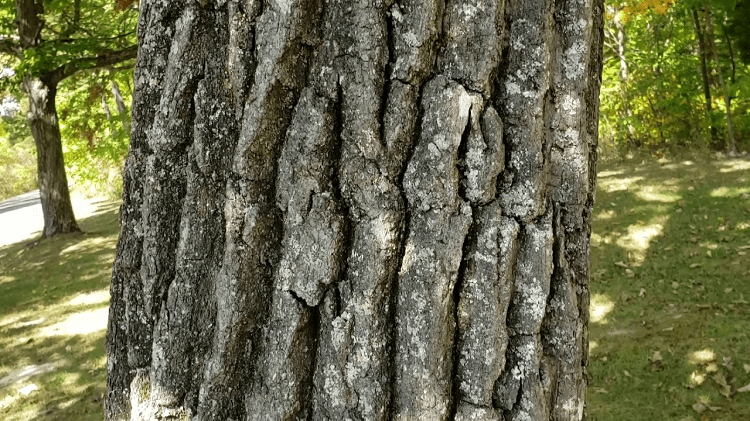
The Chestnut oak tree is identified by the thickest of any eastern North American oak, ridged dark grey-brown bark, swamp chestnut oak-like trees but can be distinguished by whitened undersides on the leaves from other white oak species.
Trees reproduce through seeds as well as vegetative means but seeds don’t store well and longevity is less than a year.
Some of the peculiar characteristics of chestnut oak trees include:
Tree Size
Its tree is not usually large typically attaining the height of 18-22 m tall as a consequence of its dry habitat and ridgetop exposure; however, it can become large up to 40-43 m in better conditions with a canopy spread of equal measurement. Due to the very dry habitat nature of the tree and ridge-top wind exposure, they don’t grow to be as large as other oak species.
Wood
The light cream wood of the Chestnut Oak is a heavy, hard, tough, and close-grained wood.
Bark
The bark is dark, scaly and is fissured into broad ridges which are bronze-green at first, and become reddish-brown at the later stage which finally turns into dark grey or brown by being heavily charged with tannic acid. The bark is the distinguishing feature of the tree.
Leaf
The chestnut-like, obovate to oblong-lanceolate shaped leaves are 5 to 9 in numbers, 4 to 8 inches long, and 2 to 4 inches wide. They are yellow-green or bronze when young, turn into dark yellow-green, somewhat shining above and thick in the full-grown stage.
Leaves contain 10 to 15 pairs of parallel veins, each of which ends at a rounded tooth. Leaves have shallow lobes and are alternately arranged.
Flower and fruit
Chestnut oak flowers are inconspicuous and will emerge right around May. Chestnut oak trees are monoecious i.e. staminate flowers are borne in hairy catkins and pale yellow whereas pistillate flowers are in short spikes and bright red.
Fruits are called acorns which occur singly or in pairs and are sweet enough to eat without boiling which is high in carbohydrates, fat, and starches and are relatively low in proteins, crude fibre, and potassium.
They are kernel white in colour and cup-shaped. Oaks are propagated easily from acorns. Chestnut oak acorns are also believed to be the largest fruits among all other oak species.
Winter Buds
Ovate-shaped winter buds are present which are light chestnut brown in colour and length is one-fourth to one-half of an inch.
Read also: Buckeye vs Chestnut Wood Comparison.
Woodworking Characteristics
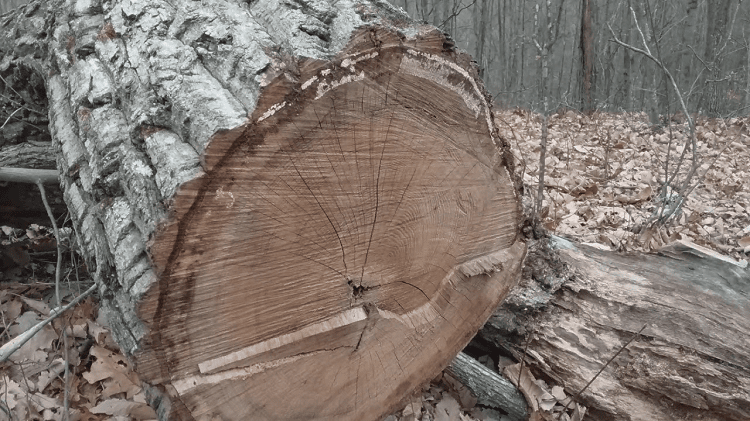
Chestnut oak species are among three or four species among white oaks that have open pores, because of which they are not well suited for outdoor application as compared with other closed pored species of white oak. They are normally sold as ‘’Mixed White oak”.
If you have a log well enough to saw, wood is pretty when quarter sawed. Strength and durability are similar to other species of White oak and saws out better than regular white oaks.
Some of the basic woodworking properties of the wood are listed below:
Average Dried Weight
The average dried weight of the wood is 47 lbs/ft3 (750 kg/m3) making it the heaviest lumber species next to hickory.
Specific Gravity
At 12% moisture content, the specific gravity of the wood is 0.57, whereas basically, it is 0.75.
Modulus of Rupture
The Modulus of Rupture for the Chestnut oak wood is 91.7 MPa.
Elastic Modulus
The Elastic modulus of the wood of Chestnut Oak is 11.00 GPa.
Crushing Strength
The crushing strength of the Chestnut oak wood is 47.1 MPa.
Shrinkage
Being the heaviest wood, Chestnut oak also has the highest shrinkage next to hickory. The radial shrinkage of the wood is 5.3%, the Tangential shrinkage is 10.8%, and volumetric shrinkage is 16.4% with a T/R ratio of 2:0. However, if placed in a stable environment by properly drying, the wood shows very little movement.
Colour or Appearance
Wood of Chestnut oak though may vary in a fair amount of colour but usually is light to medium brown. The slow growth of aged trees will give pink colour to boards occasionally, which is very similar to red oak.
Grain/Texture
The chestnut oak tree has medium to large pores with fairly coarse grain and fine texture. Ring pattern in ring-porous where pores occur mainly in the earlywood and are visible to naked eyes, which creates an abrupt transition to latewood.
Chestnut oak wood is often confused with Chestnut because both kinds of wood are ring-porous and have bands of large, circular cells parallel to bark.
Rays
Like all other species of oak, Chestnut oak trees have very large wood rays, which are the largest of any North American commercial lumber and 1.025 inches tall. The end of rays is exposed when oak is flat sawn.
Decay/Rot Resistance
The heartwood of Chestnut oak is known for having moderate resistance to decay, and can be treated with chemicals to make it more resistant.
Workability
Overall, Chestnut oak wood works fairly well with hand-carved and machine tools. It glues and finishes well. As Chestnut oak is much heavier, wood is harder to nail than that of Douglas fir and Southern pine but can be craved easily to produce artefacts or to give artistic features to the furniture.
They are considered one of the best woods for boring, planning shaping, and turning. For steam bending, it is rated as one of the best wood by the U.S. forest products laboratory, whereas Chestnut oak lumber is difficult to dry and a mild kiln schedule must be used for the purpose.
In addition, internal checks, honeycombs can develop in the dry kiln process and air drying yard as well. If one is considering Chestnut oak lumber commercially, they must be aware and follow procedures to avoid them.
Odour: The Chestnut oak wood has a distinct tell-tale smell, which is common among others oaks. Many people find the smell appealing.
Allergies/Toxicity
Although toxicity reactions of this wood are quite uncommon, be careful while working with Chestnut oak species as wood dust has been reported to cause allergic skin reactions, runny nose, and asthma-like symptoms in some people.
Pricing/Availability
The Chestnut oak wood is sold and mixed interchangeably with Red oak, but is slightly more expensive than Red oak and is available as construction lumber in good/sustainable supply.
Chestnut oak is not an expensive wood and is moderately priced and one should expect prices to be in the low to mid-range as it is widely available and grows rapidly. Quartersawn boards or thicker 8/4 planks are slightly more expensive than per board foot wood.
Application of the Chestnut Oak Wood
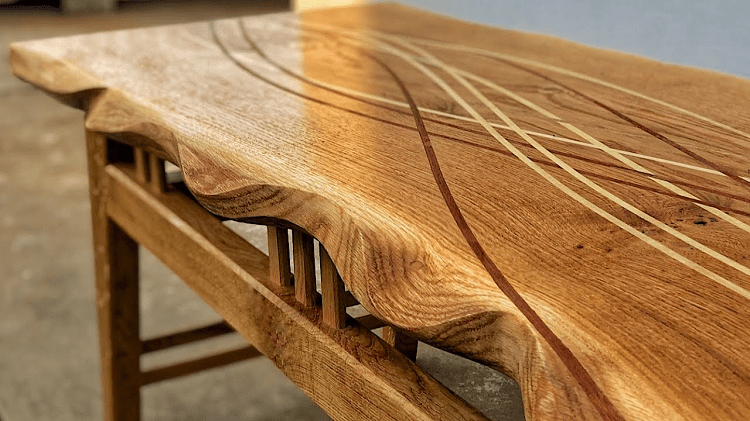
Generally, Chestnut oaks are not considered the best timber trees. Falling into the same White oak group, Chestnut oak shares many of the same traits as the White oak, Quercus alba. Wood is heavy, durable, and hard and machine well when properly dried.
But some of its properties like its resistance to rotting and easiness in glueing, staining and applying finishes has made it applicable in several uses. Some of the most common uses include:
1. Firewood
Starting with the obvious, oaks are some of the best trees that you can get for your firewood and chestnut oak is even one of the best ones among them. Although oaks take longer to season to be ready for your fireplace, chestnut oaks dry faster because they have fewer tyloses compared to other oaks.
Chestnut oak burns slow and produces more heat thanks to its very high density of 47 lbs/sq.ft. So you might want to use it in a mix of other faster burning woods. If you want to slow-burning warm fire all night long, chestnut oak is your best option.
2. Cabinetry and Furniture
Using chestnut oak wood for furniture and cabinetries can be a challenge since it is significantly heavier to work with. However, if you can endure the hardships of dealing with heavy wood for your cabinets, benches or anything you’re making, you can make a piece of beautiful furniture out of the chestnut oak wood.
But the main challenge is getting yourself a straight chestnut oak tree or a well-sized board to work with. Although rare, straight chestnut oak trees make for great quality furniture with its clean straight grain and the durability of the white oaks that will make it last years.
3. Flooring and Interior
As mentioned above, chestnut oak trees are aesthetic with creamy sapwood and reddish-brown heartwood. So whenever available, they make for excellent flooring and interior option.
They are even sought after in antique restoration projects because of their appearance. You can also find these woods being used with a sapphire finish that gives it a premium look. Like white oaks, it has good workability and can be used and modified to fit the different needs of many indoor spaces.
Some other uses of the wood from chestnut oak trees include making railroad ties and posts for timber or any other uses of hardwood you may come across. However, the uses of a chestnut oak tree are not limited to its wood.
If you own a woodlot and want it to have wildlife in it, you might want to think twice before cutting down chestnut oaks since the acorns it produces attract animals like deer, mice and squirrels.
Having lower prices to red oak in the wholesale market, they are still considered as a valuable species for veneer quality logs and lumber if they are quarter and rift sawn compared to standard lumber. As a result, thicker planks or quarter-sawn will cost you slightly more.
Note: Unlike White oaks, chestnut oak wood is not used to make barrels because it has fewer amounts of tyloses in it. Tyloses, which are ballon-like structures, grow into the wood cells and prevent moisture flow which is what keeps the liquid inside the barrel without evaporating.
Tools to Use while Working with Chestnut Oak Wood
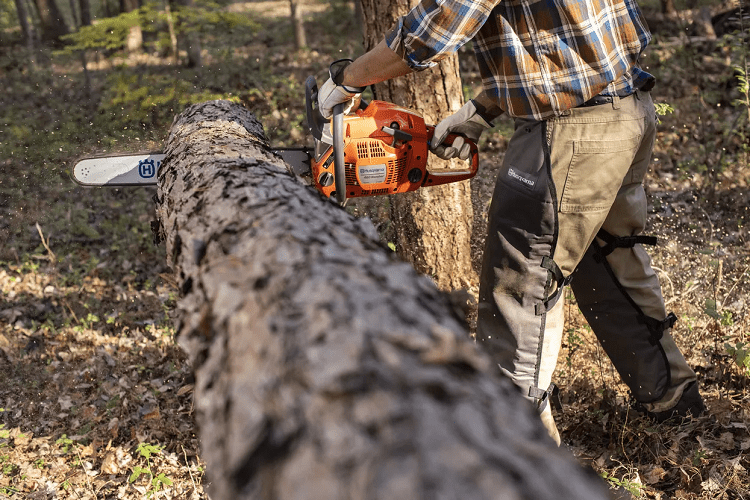
Some tools are better suited than the rest for a specific type of wood. Some of the products that are best while working with the chestnut oak wood are as follows:
Chainsaw
Since we know that chestnut oaks are dense hardwoods so you’ll need a powerful chainsaw to handle it properly. One of the best chainsaws you can get is the Husqvarna 460 Rancher 24 Inch Gas Chainsaw if you have heavy-duty needs.
Also, chestnut oak and hardwood in general ask for a semi-chisel saw chain like the Oregon semi-chisel saw chain to maintain the sharpness longer while cutting into the dense wood.
Axes
If you choose to use felling axes instead of the chainsaws, you will best benefit from using the Helko Werk Traditional Double Bit Axe since its sharp bit will allow you to take down the tree and the thick bit will come in handy when splitting the wood for firewood.
However, as much as possible, try to use a chainsaw for felling the tree and a designated splitting axe like the Fiskars X25 Splitting Axe for making firewood to reduce stress on your arms. For a detailed guide on choosing the best axes, you can refer to our complete axes and hatchet guide.
Sawmills
Chestnut Oaks are pretty big and require a large sawmill to turn them into lumber. Our Sawmill and milling guide will help you with the entire milling process and choosing a sawmill depending on your needs.
For chestnut oak especially, quarter-sawn timber is the best and I’d recommend quartersawing the tree only if it’s larger than 24” since you won’t get much out of it if it’s any smaller.
Other Tools
While working with chestnut oak wood in your workshop, you need to regularly sharpen your tools. Also, make sure to use a fine-grit sanding paper while sanding and a backing board while making cross-grain cuts.
Finally, due to the presence of tannic acid, you need to opt for stainless materials for your fittings in the furniture, especially for those intended for the outdoors.
Things to be Considered While Working with Chestnut Oak Wood
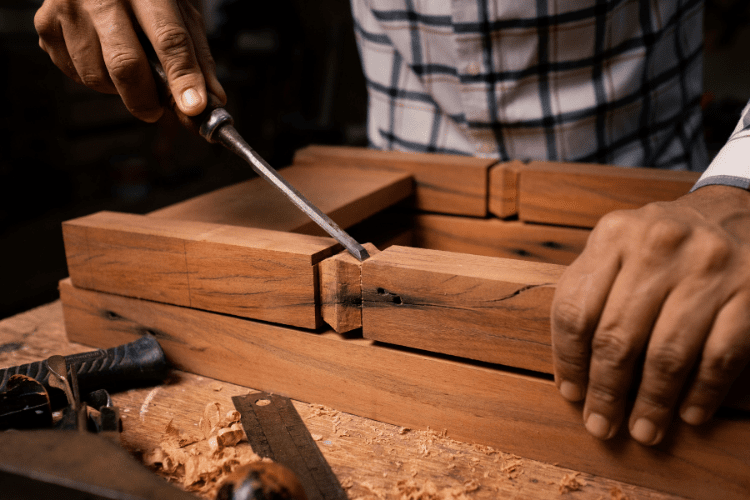
Chestnut oak is hard, durable as well as moderately priced lumber and has several advantages of being extraordinarily resistant to pests and water damage, needing little or no maintenance, presenting exceptional value to woodworkers.
The woodworking characteristics have made it the best choice for construction and furniture for a long period. Despite that, there are several difficulties in working with this timber. Therefore understanding the challenges of working with this lumber can save one’s energy, time as well as financial aspects.
Some points to be considered while working with Chestnut oak wood are:
Understand Green and Dried Wood
- If one is planning to work with this wood extensively, green oak is probably the best option because as the timber dries the moisture, it becomes harder making it more difficult to work with.
- The green state is the best option regarding the price as well as it requires no processing making it the most environmentally friendly choice.
- The wood will need to be treated with suitable preservatives if intended to be used outdoors, as green oak will change colours and will also shrink over time.
Fixtures and Fittings
- Wooden pegs tenon or mortise joints should be used to connect individual wooden parts, mainly due to the costs of metal components. In addition to that, as the oak around wooden pegs shrinks over time, dried wooden pegs form a stronger joint over time.
- Metal pegs are best avoided as tannins in chestnut oak can cause black staining whereas moisture content can weaken the joint by causing iron to rust.
- Care must be taken while using glues, as water-based glues are known to cause warping and swelling in dried oak by transforming moisture back into the timber.
Keeping the Tools Sharp and Clean
Sharp tools are absolute essentials while working with any hardwood species, especially oak because air space between cells is packed tighter, as a result, planes, and chisels will face a tough time parting the grain.
- Using high force with a dull-edged tool will cause wood to split rather than cutting damaging the lumber beyond its repair.
- Use of sharp blades and operating tools and lastly, cleaning and drying of every tool after working with green oak as the moisture and tannins can cause tools to corrode, should be considered.
(FAQs) Frequently Asked Questions
Question: Chestnut Oak is a Hardwood or a Softwood Species?
Answer: Quercus Montana, the chestnut oak is a hardwood species, a member of the white oak group native to the eastern United States, and one of the most important ridgetop species.
Question: How Can One Identify a Chestnut Oak?
Answer: The tree has a distinctive thickest grey bark among any of the oaks with deep vertical furrows. The leaves are simple, 4-11 inches long with teeth on both sides.
Question: Is ‘Chestnut oak’ a Chestnut Tree or an Oak Tree?
Answer: Chestnut oak is among several North American timber trees belonging to white oak trees with chestnut trees. Therefore the naming of the tree as chestnut oak comes from its oblong, toothed leaves resemblance to American chestnut leaves.
Question: What is Chestnut Oak Good For?
Answer: Fresh quarter sawn chestnut oak is used for interior decorations, such as construction lumber, furniture, and planning. Apart from its lumber value, the tree is also valuable as the acorns of the tree are edible and nutritious food for many wildlife species like deer, squirrels, etc.
Question: Is Chestnut oak Wood as Good as Firewood?
Answer: Just like any other white oaks, Chestnut oak wood is good as fuelwood which is available readily and gives a hotter and longer burn time because of its highest density i.e. 47 Ibs/sq.ft.
Question: Do I Need Powerful Tools While Working with Chestnut Oak Wood?
Answer: As mentioned earlier, Chestnut oak is a hardwood species. Wood cells have higher attractive force binding them together; therefore, the use of powerful tools with a sharp edge is an absolute must as planning with simple tools with the blunt edge will lead to the plane skating over the surface as well as the friction of blunt tools can cause oak susceptible to burning.
Overall, woodworks fairly well with machine tools, glues, and finishes acceptably.
Question: Do I have to Worry About Any Allergies while Working with Chestnut Oak Wood?
Answer: Although it is not so common to hear about severe reactions while working with Chestnut oak, oak has been reported as a sensitizer and the most common reactions include eye problems, skin irritation, and breathing problems like asthma. Therefore one should be careful with the sawdust.
Question: Where Can I buy Chestnut Oak Wood?
Answer: Chestnut oak wood is in sustainable supply, although slightly more expensive than red oak, is moderately priced. One can find Chestnut oak wood in every lumberyard in Eastern North America.
Conclusion
Chestnut oak tree also referred to as eastern chestnut oak and rock oak is a species of the White oak group. It is noted for its capacity to survive on steep and rocky sites and is readily identified by its thickest grey-brown bark and chestnut-like toothed leaves.
The wood of the species is tough, hard, strong, and light cream-coloured. As branches start their growth low down, trunks end up being misshapen; therefore, they are not considered as one of the finest and high-quality white oaks from the standpoint of the lumber industry.
They are significantly less valuable than other oak wood species but they are still cut and sold as other white oaks species and used for posts, veneers, tools, and firewood. Chestnut oak wood is used in making railway ties, fences as well as fuel. The highest density (47 lbs/sq.ft) makes it excellent firewood which burns slowly and is very hot to keep you warm all night long.
To sum it up, Chestnut oak wood is durable and long-lasting wood with attractive wood grain and good water-resistant properties. Despite not being the first choice for the lumber industry, the wood is still used for beams, furniture, veneers, flooring, fencing and is excellent firewood.
